Michigan vegetable crop report – June 11, 2025
Crops and weeds made a big jump this week with better growing conditions. Aster leafhopper infectivity is up, and downy mildew spores are detected.

Weather
Over the past week, most of the state saw weather that was 2-4 degrees Fahrenheit above-normal with variable rainfall. Degree day total are ahead for part of the Upper Peninsula, behind normal for the northern lower and very close to normal for the southern lower.
This week’s forecast calls for:
- A few isolated showers possible north early Wednesday. Mostly fair, windy and warm elsewhere. Scattered showers and thundershowers possible overnight Wednesday to the south spreading north on Thursday and continuing through Saturday. Mostly fair and dry Sunday and Monday with rain possible again Tuesday next week.
- High temperatures from the mid-70s to mid-80s Wednesday cooling to the 50s and 60s to the north to low 80s to the south Friday and Saturday. Temperatures will warm up to the 70s to low 80s Sunday into early next week. Lows from the mid-40s north to mid- and upper 50s south through this weekend.
- Medium range outlooks call for a progressive pattern with temperatures averaging out near to above normal with above normal rainfall.
Monday saw very spotty severe weather with some short-duration nickel sized hail.
On-farm soil moisture monitoring research opportunity
Michigan State University (MSU) researchers are looking for 10 farms to install soil moisture probes in up to two fields. Cooperators get access to real-time data for both monitoring stations for three growing seasons (fall 2025-fall 2028). Refer to the flier for more details.
Reach out to Alex Kuhl (kuhlalex@msu.edu) if you might be interested or have questions.
Crop updates
Asparagus
Picking continued in west central Michigan with growers hopeful upcoming rains and warmer weather will keep pickings going for a nice end to the season.
Shutdown is only a few weeks off, so it is a good time to scout asparagus fields to see what problem weeds are present. These may include problem perennials that are not well controlled by a standard glyphosate and 2,4-D burndown. Canada thistle is a prickly problem; clopyralid has good activity, quinclorac also has some activity. Field bindweed can be targeted with quinclorac. Resprouts of tree of heaven can be targeted with systemic herbicides. In non-crop systems-where land managers have experience combatting it-control often focuses on basal bark or hack and squirt applications in summer or fall.
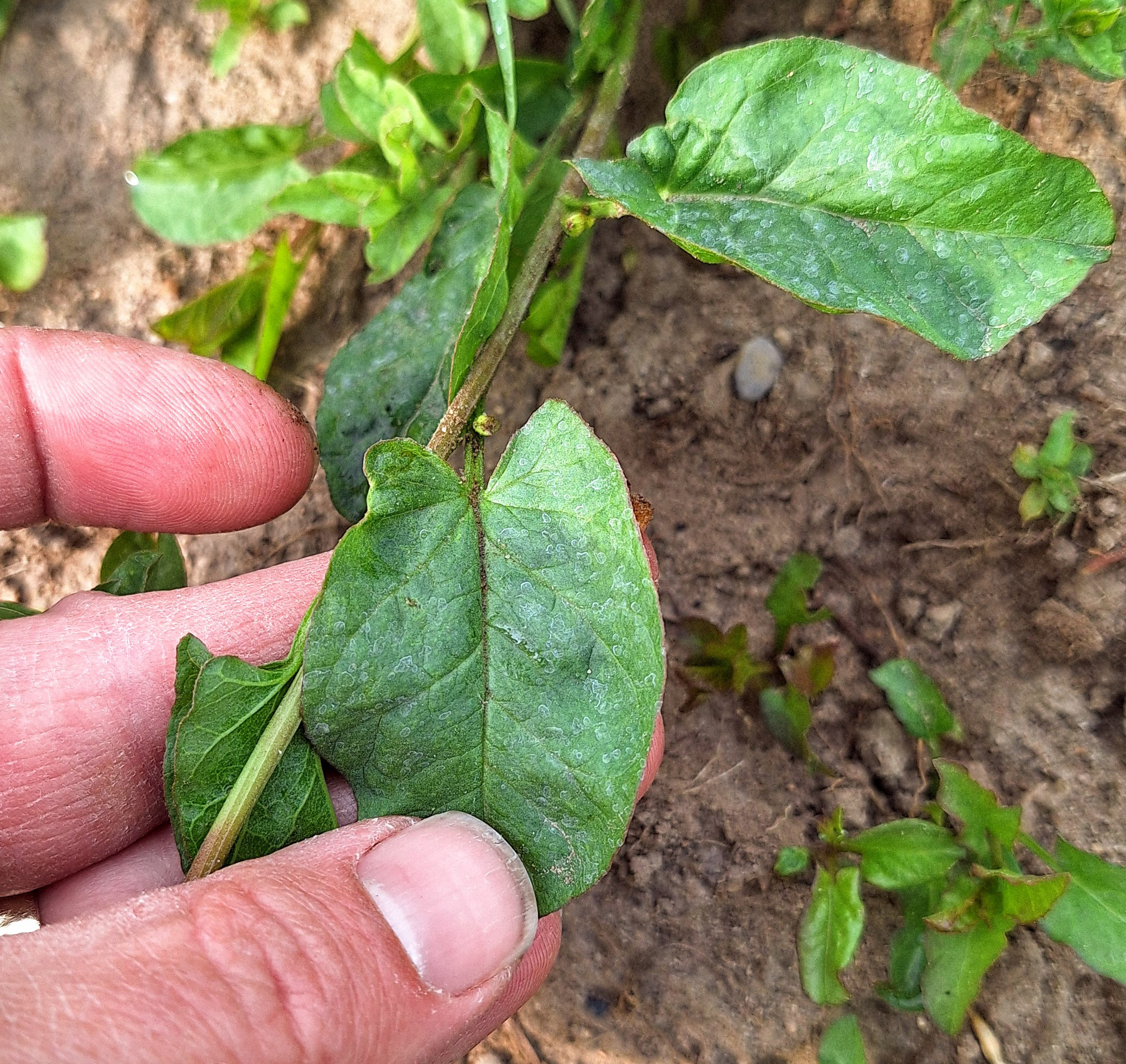
With problem perennials, consider if spot treatment is an option if the weeds are clustered in parts of the field. This could include a backpack sprayer, a small sprayer on a quad, or something you devise. Be aware growers have experienced that excessive, uncalibrated spot treatments can also do more harm than good, creating holes in fields where herbicide takes its toll on asparagus and not just weeds.
Some farms have had minimal asparagus beetle issues this year, others have had to spray multiple times. More on why this might be will come in a future newsletter.
Brassicas and greens
Some early planted crops are closing in on the first harvest. Caterpillar damage is being observed in brassicas, including on transplants in the greenhouse. Cabbage white butterflies (imported cabbage worm adults) are being seen flying.
Carrots and celery
Over the past week, samples of aster leafhoppers collected from six counties (mostly in western Michigan) have tested positive for aster yellows. Both the number of leafhoppers and the percentage carrying the disease have recently increased, reducing control thresholds. Data from each sample can be viewed on the MSU Plant and Pest Diagnostics website, which is regularly updated with the latest sample test results.
Processing carrot growers were busy applying herbicide over the past week. Early plantings of dicing carrots had received two linuron applications and clethodim had gone on to help terminate windbreaks and/or kill crabgrass. Clethodim resistant crabgrass has been detected in Michigan. If you suspect it, please let us know or consider submitting seed later this year for screening at MSU. Pigweed continues to be challenging as growers have limited tools beyond linuron.
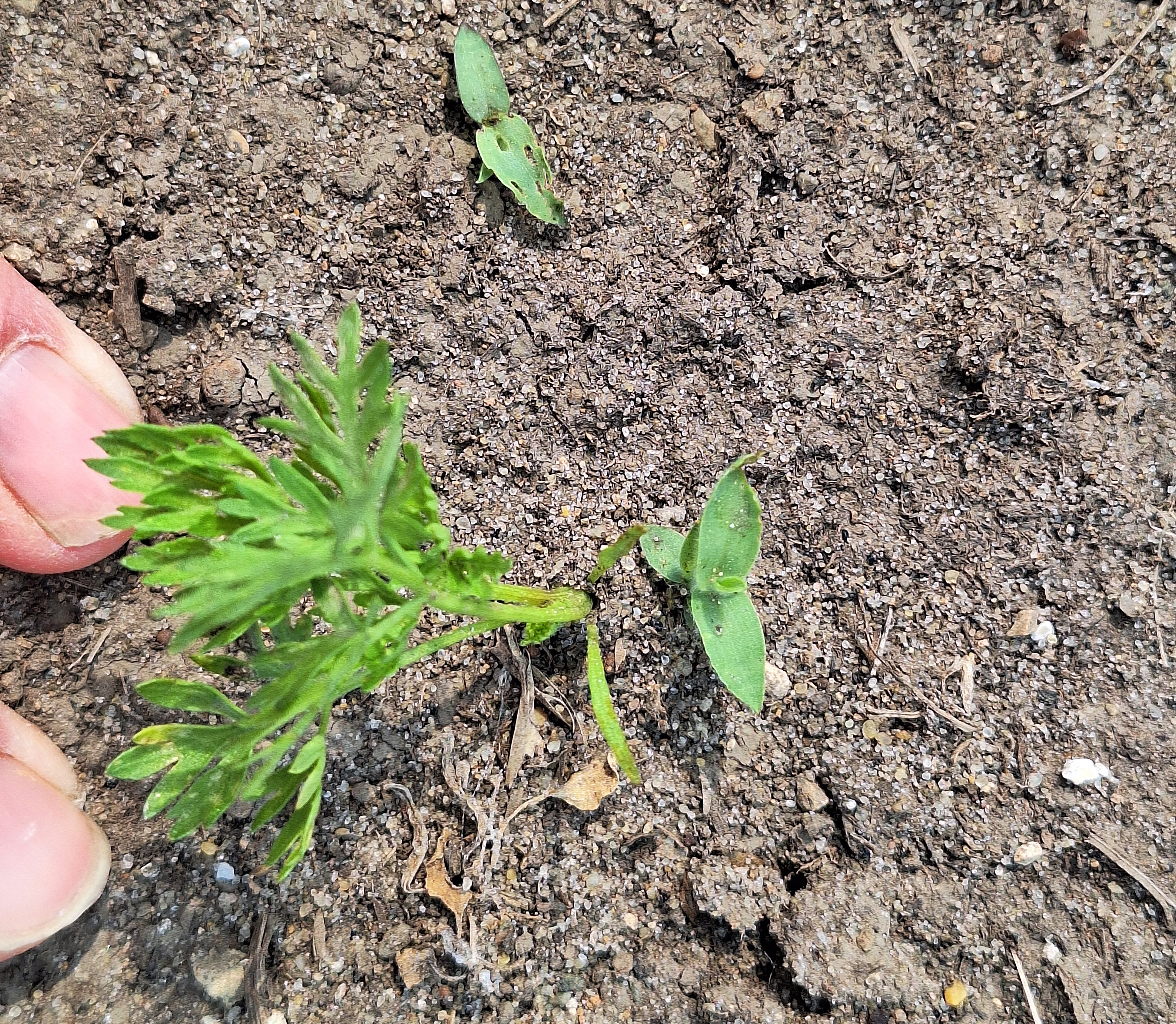
Cucurbits
Cucumbers, summer squash and melons are still being transplanted/seeded outside. Pumpkins are being planted and some have already emerged. Growth has jumped with the consistently warmer daytimes.
Striped cucumber beetle was active last week at one west central location, so keep an eye out for it. Downy mildew spores have been detected in Allegan, Muskegon and Bay counties this week, which coincides with the big storm front from last week that brought strong southerly winds into the state.
Fruiting vegetables
Plantings are ongoing. Tomato fertilizer programs are dictated by soil tests, plant stage and personal preference. If a preplant fertilizer was broadcast, then the rest of the season is about meeting the rest of the full season fertility needs. Some people apply all their potassium preplant, and others cut it in half or more, just like their nitrogen. Early in the season fertigation consists of mostly nitrogen, and later just before first flower some growers switch to mostly potassium to avoid ripening issues like gray wall and yellow shoulders.
Herbicide injury in hoophouses
Together with the Michigan State University Extension vegetable team, MSU Plant and Pest Diagnostics has had a couple cases where herbicides appear to have moved into hoophouse structures to impact vegetables. It is important to remember that herbicides can move into structures through vents, windows and other openings in the form of particle drift and vapor drift (aka volatilization) from neighboring areas. The chances of off-target movement are often influenced by certain weather conditions, such as wind, high temperatures and temperature inversions.
The pattern of impacted plants can vary from just a few near the edges or openings to the whole crop in the house. In the case of the following pictures, symptoms included cupped, twisted and distorted young leaves, as well as fruit abnormalities such as pointed bottoms, catfacing and overall distortion. Tomatoes are highly sensitive to many herbicides, and the type and severity of symptoms depend on several factors, including the specific herbicide involved, the dosage and the plant’s growth stage at the time of exposure.
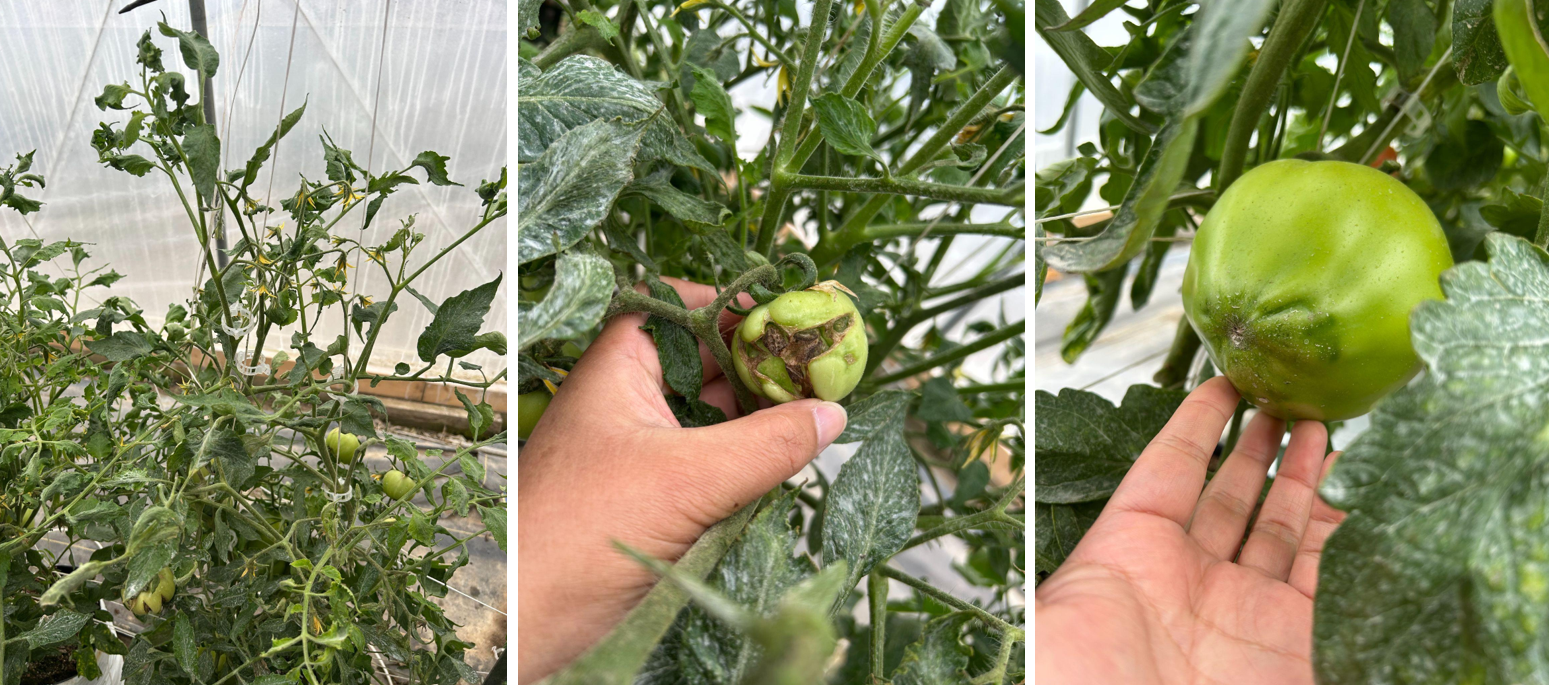
If you suspect herbicide injury, first consider the chance that it came from your own operation. Other examples of non-target herbicide injury seen in the past include misapplication, tank contamination, contaminated soil amendments (e.g., field soil and mulches) and carryover from previous treatments in and around the house.
If you do not suspect an issue with your operation, consider applications that may have occurred on adjacent properties. If you have a good relationship with the neighbors, you could start a conversation about some irregularities you’ve observed and hope to gain useful information about what has occurred and how you might work together to prevent any issues moving forward. It is also an option to file a pesticide complaint with the Michigan Department of Agriculture and Rural Development. You can read more about what to expect from that process on their website.
If plants are showing visible signs of herbicide injury or we know they were drifted upon, the question often arises, is it safe to sell/consume? To answer this question, we must know two things:
- The specific pesticide and quantity of residue that is present.
- The maximum residue limit (MRL) set by the U.S. Department of Agriculture (USDA) for the crop and pesticide in question.
Fruits and other plant tissues can be sent to labs for residue testing, with costs varying based on the pesticide in question. MRLs can be looked up in the USDA Database, but when a pesticide is not labeled for use in the affected crop, it decreases the chances of there being an established value. For example, if we can determine that these tomatoes were injured by the herbicide dicamba (i.e., synthetic auxin, Group 4), no matter the residue level, there is no established MRL, therefore they would not be salable and should not be consumed.
If you have confirmed that you have thrips in peppers, hold off spraying an insecticide until after flowering. Thrips are attracted to flowers, and their feeding can cause flowers to drop. Delaying the use of insecticide until after flowering lets natural enemy populations that live in the field to build up earlier in the season. Avoid carbamate and pyrethroid insecticides, as these kill all natural enemies, which will cause thrips populations to flare up. If you determined that an insecticide application is needed, rotate insecticide mode of action classes. Movento can be good for suppression when thrips pressure is low earlier in the season. Radiant, Exirel or Minecto Pro is recommended for higher pressure situations later in the season.
Always check the labels for rates and other details and double-check Bulletins Live! Two. Check out the Midwest Vegetable Guide, which has a list of some other options. You can filter for greenhouse uses, as some insecticides aren’t registered for use in greenhouses.
Beyond insecticides, thrips in the greenhouse can be managed with beneficial insects, such as predatory mites, that can be purchased and released in the greenhouse. In the field, metallic mulches can repel thrips and other insects. Overapplying nitrogen applications to the plants makes peppers more susceptible to thrips.
Onions and garlic
Stemphylium management for onions
Spots and blights on the leaves can get in the way of good onion growth. Purple blotch used to be a common disease of onion leaves in the northeast U.S., but Stemphylium leaf blight has now become the most formidable opponent for many onion producers. Stemphylium leaf blight is caused by a fungal pathogen of the same name (Stemphylium vesicarium).
Early symptoms of Stemphylium leaf blight can be difficult to diagnose. Tip burn may be associated with herbicide damage but can also be a first symptom of disease. The brown spots of Stemphylium leaf blight are small at first but increase in size, extending down the leaf. These elongated lesions can appear similar to symptoms of bacterial stalk and leaf blight. An accurate diagnosis can be obtained by sending plant samples with symptoms to a university diagnostic lab. In healthy onions, the oldest onion leaves die first. However, premature leaf death resulting in a mid-season loss of green leaf tissue is typical of Stemphylium leaf blight. Without healthy foliage, bulb size is reduced and so is total yield.
Many of the fungicides that were historically used to manage purple blotch do not adequately protect against Stemphylium leaf blight. Field research from Michigan State University has shown that the Stemphylium leaf blight pathogen is resistant to fungicides classified as strobilurins such as azoxystrobin, picoxystrobin, pyraclostrobin and trifloxystrobin. On the other hand, Omega SC, Luna Tranquility SC, Miravis Prime SC, Tilt SL and Luna Experience SC effectively limit Stemphylium leaf blight.
MSU research has also shown that fungicide programs to protect the onion’s foliage from Stemphylium leaf blight should begin when plant are young (by the 5- to 7-leaf stage) and include highly effective products at the front end of the season to prevent the pathogen from becoming too well established. Protecting the onion leaves early in the season helps to ensure that the plants have a fighting chance to reach maturity and achieve their full yield potential.

Onion thrips were present on transplanted onions again this week at one location, and Movento had been applied. It is helpful to apply Movento in two, back-to-back applications a week or so apart. Experience has shown that a “one-two” punch can provide extended control. This is different than other insecticides. Make sure to include a penetrating surfactant and avoid tank mixing it with chlorothalonil.

Sweet corn
Sweet corn successions are being continuously planted. Early varieties of sweet corn were starting to develop tassels in west central Michigan farms targeting early markets.
True armyworm can be an earlier-season caterpillar pest that’s spotty but occasionally significant. Plantings are most at risk if they follow a heavy rye cover crop. Females lay eggs in the rye, caterpillars hatch and move over to corn once it develops. These caterpillars take characteristic chunks out of leaf edges.
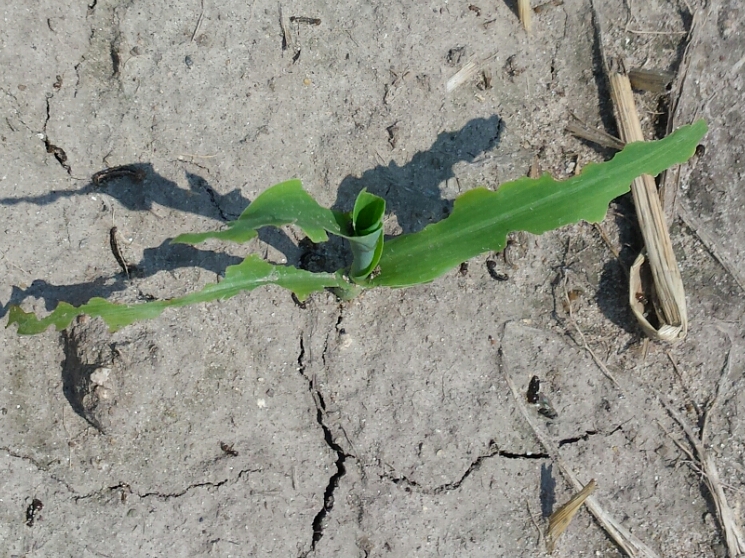
European corn borer may be flying in some locations. This first batch of caterpillars may confine itself to feeding on whorls (caterpillars feed in whorls until tasseling, when they move down the plant to feed on ears and stalks). If you see damage in the whorls, you know this pest is something to think about in later, main-season plantings. Caterpillars feeding in the whorls create the same effect as cutting holes in folded paper to make grade-school snowflakes. There is a line of shotholes that unfolds with the leaf and should be visible once the leaves are out of the whorl.

Root crops
Cabbage maggot continues to be an issue in brassica root crops. Some farms have applied chlorpyrifos ahead of its final cancellation at the end of this month. In some fields, they have still observed maggot damage.
Symptoms associated with scab were visible on turnips at one location this week, with browning on the main bulb but also on the taproot. In severe cases, the taproot can break off when the turnip is pulled from the ground.
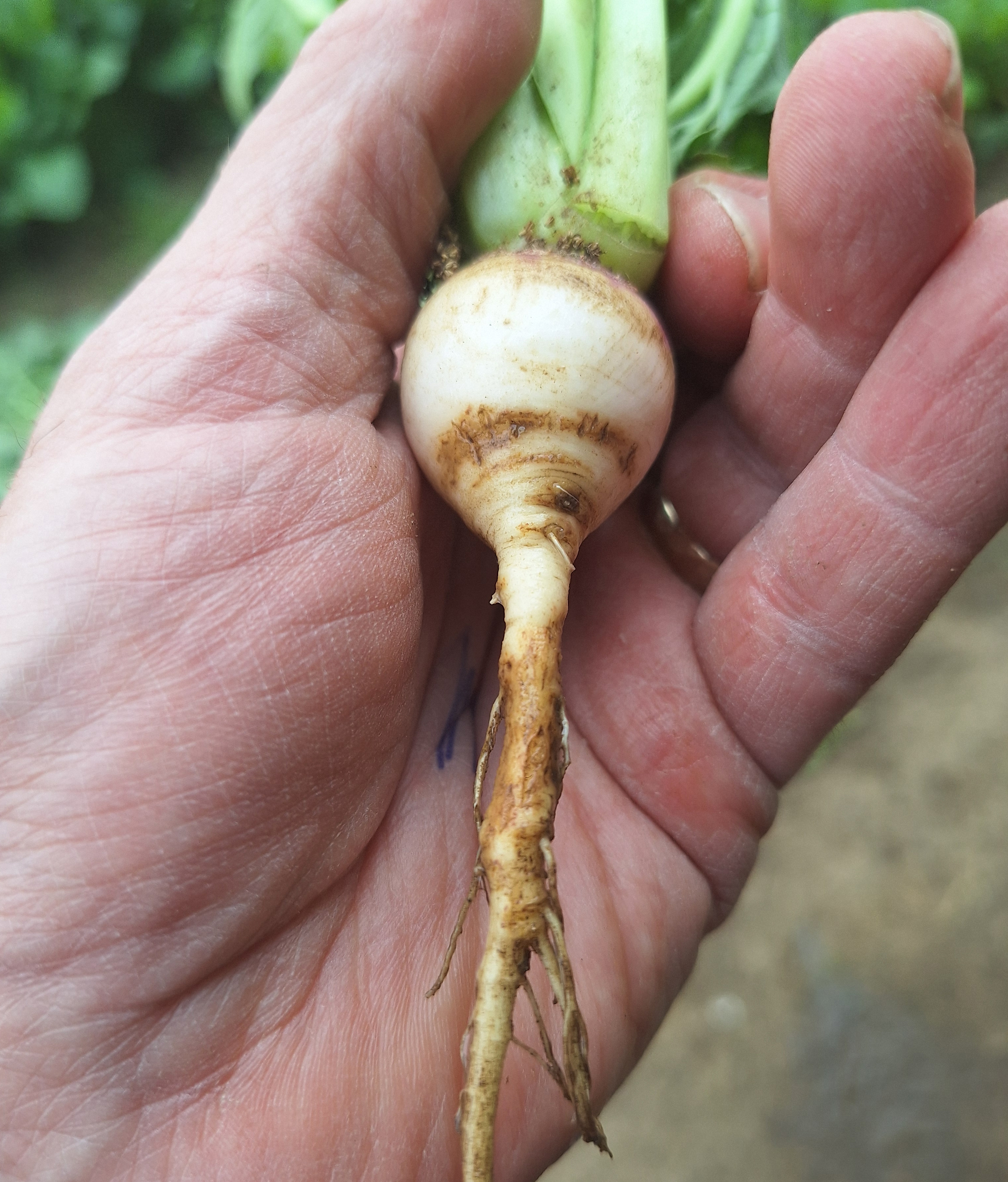
Hairy nightshade was present in two turnip plantings we visited this week. At first, it looked like lambsquarters, but on closer inspection it had hairy leaves and stems and a more wavy leaf edge. Dual Magnum is labeled in turnips and has some preemergence activity against nightshades, though on sandy soils crop safety may be of concern. Clopyralid (30-day preharvest interval) is labeled for post-application and states the higher end of the rate range has activity against small hairy nightshade. Before any new herbicide application, talk to those who have firsthand experience to learn about crop safety.

Strawberries
The first strawberries are being picked in the eastern part of the state. It’s predicted that harvest will be in full swing sometime next week.
Produce Food Safety On-Farm Readiness Reviews
Schedule an On-Farm Readiness Review today for a two-hour educational visit that takes place during the harvest season and is meant to be casual and low stress. Everything discussed during an On-Farm Readiness Review is confidential and focuses on ways to reduce risks in relation to produce safety. There is no pressure to take our advice either, we are just here to support you in your produce safety efforts.
Events
- June 17, 1-5 p.m. Beginning Farmers "Train the Trainer" Workshop - Chatham
- June 18, 8:30 a.m.-12 p.m., Scouting School 2025 (Day 2)
- June 19, 7-8 a.m., Field Crops Virtual Breakfast Series: Legacy Phosphorus: The Hidden Driver of Drainage Loss (CCA only)
- June 19, 5:30-8:30 p.m., Pollinator Workshop for Beginning Farmers
- June 24, 9 a.m.-12:30 p.m., No-Till Pumpkin & Cover Crop Field Day
- June 26, 5:30-8:30 p.m., Farm Financial Management Workshop for Beginning Farmers
- July 16 - 8:30 a.m.-12 p.m., Scouting School 2025 (Day 3)
- July 30, Edible Flint Food Garden Tour
- August 5, 12-1 p.m., Seed Treatment Webinar Series
- August 12, 12-1 p.m., Seed Treatment Webinar Series
- August 18 – 19, Northern Michigan Small Farm Conference
- August 19, 12-1 p.m., Seed Treatment Webinar Series
- August 26, 12-1 p.m., Seed Treatment Webinar Series
This work is supported by the Crop Protection and Pest Management Program [grant no 2024-70006-43569] from the USDA National Institute of Food and Agriculture. Any opinions, findings, conclusions, or recommendations expressed in this publication are those of the author(s) and do not necessarily reflect the view of the U.S. Department of Agriculture.



 Print
Print Email
Email

